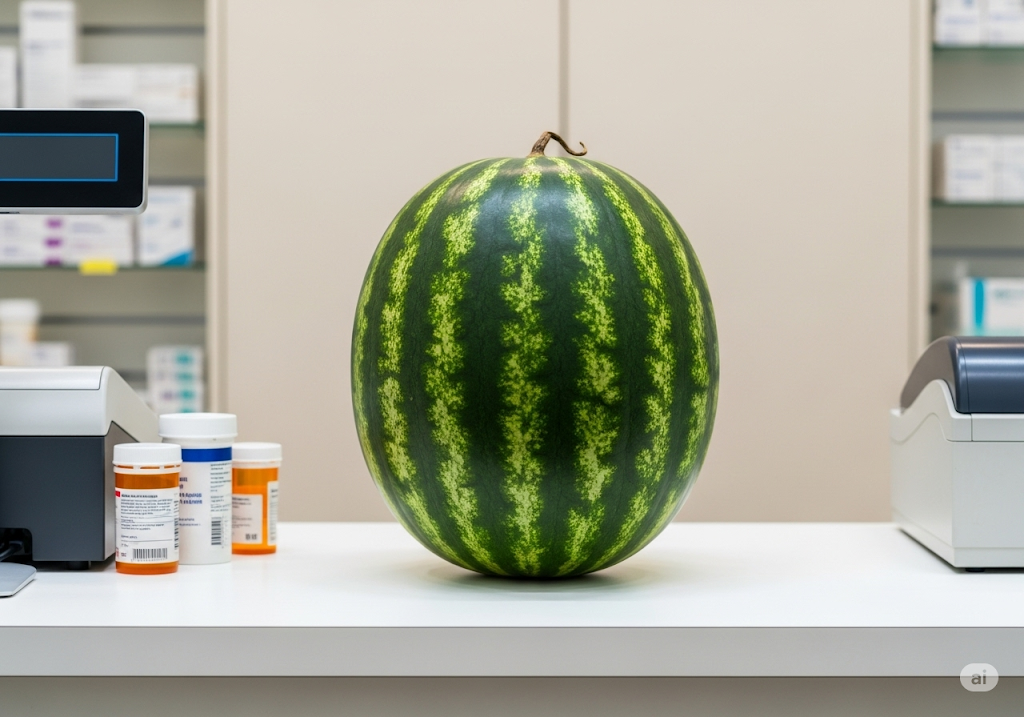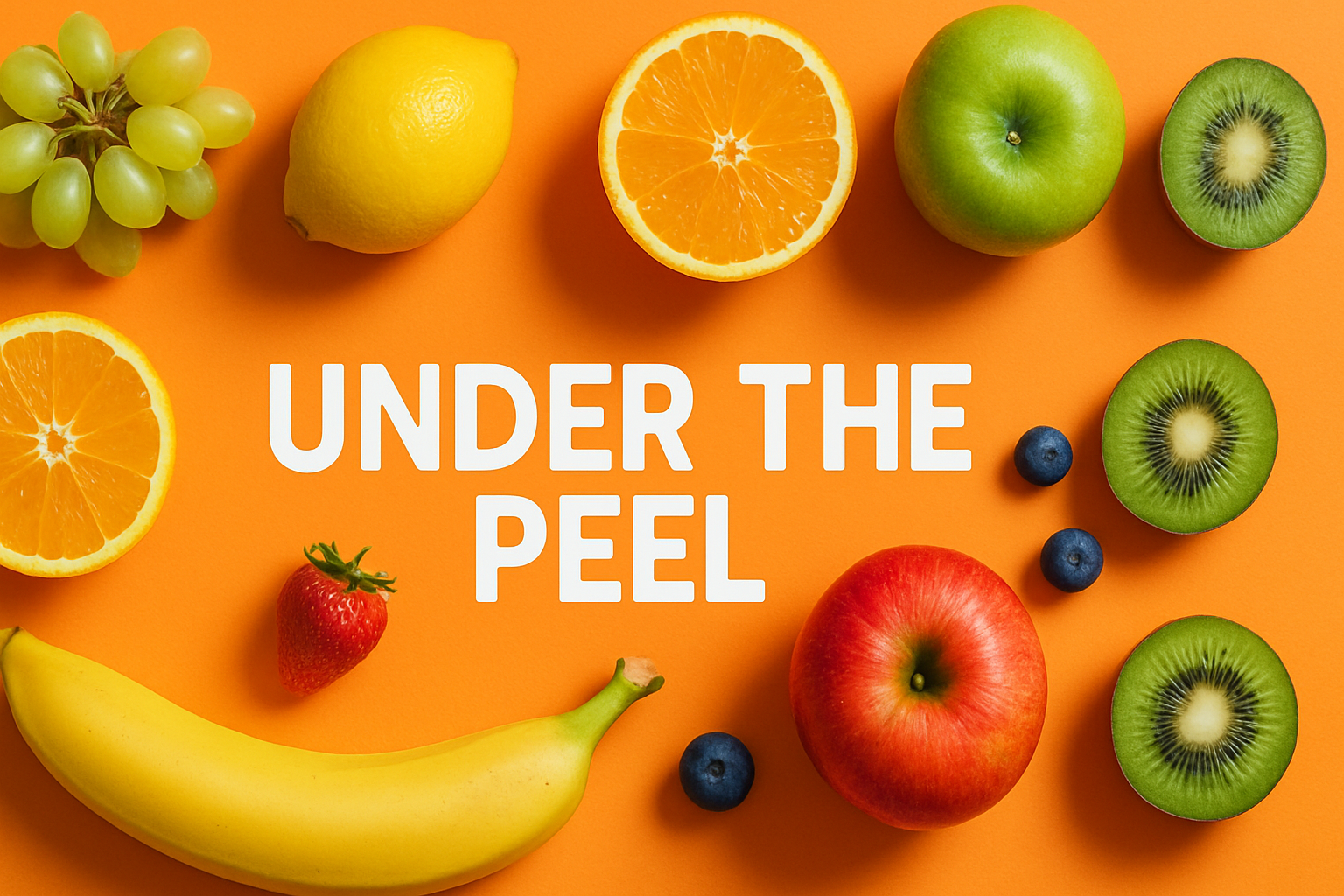**ENG**
Good morning everyone, today I would like to bring to your attention another article from “ under the peel”, the column in which we learn together the nutritional properties of the most consumed fruit in the world. If you are interested in these topics, don’t forget to follow my profile. That said… let’s go!

image created with openai.com
Watermelon (Citrullus lanatus), also known as cucumber, is one of the iconic summer fruits. Fresh, juicy, and thirst-quenching, it's loved by adults and children alike. But beyond its sweet and refreshing flavor, watermelon boasts surprising nutritional benefits.
Consisting of over 90% water, watermelon is perfect for staying hydrated during the hot months. It helps replenish fluids lost through sweat and has a natural diuretic effect, useful for combating water retention.
With about 30 kcal per 100 grams, watermelon is one of the lowest-calorie fruits. It's ideal for those following a low-calorie diet or looking for a light, guilt-free snack.
Watermelon is rich in lycopene, a powerful antioxidant belonging to the carotenoid family. Lycopene is responsible for the fruit's red color and helps fight free radicals, reducing the risk of certain chronic diseases, including cardiovascular disease.
Watermelon contains several B vitamins, including B1 (thiamine) and B6 (pyridoxine), as well as vitamin C, which is important for the immune system. Minerals include potassium, which is useful for muscle health and blood pressure regulation, and magnesium, which promotes proper nervous system function.
The pulp and especially the rind of watermelon contain citrulline, an amino acid that has beneficial effects on blood circulation and can contribute to cardiovascular health. Recent studies suggest that citrulline can also improve athletic performance.
Beyond its nutritional benefits, watermelon is a fruit rich in curiosities and traditions. Here are some of the most interesting:
1) Watermelon has African origins and was already known to the ancient Egyptians, who depicted it on the walls of tombs. It was often placed next to the deceased as a symbol of nourishment in the afterlife.
2) Watermelon is one of the largest fruits cultivated by man. The world record for the heaviest ever harvested is over 159 kg, set in the United States. Some countries even organize competitions to grow the world's largest watermelons!
3) Many discard them, but watermelon seeds are edible and nutritious. When toasted, they become crunchy and rich in protein, magnesium, iron, and healthy fats.
4) In some Asian cultures, watermelon is also used in savory dishes. In India, for example, it is prepared with spices; in some parts of China, it is served with vinegar and salt.
5) The rind, often discarded, is edible and can be used in cooking. In some traditional recipes, it is pickled, candied, or made into jam.
Watermelon is not only a summer treat, but also a health ally. Rich in water, low in calories, and packed with nutrients and antioxidants, it's one of the ideal foods for dealing with the heat. And thanks to its many curiosities and culinary uses, it can amaze even the most curious palates. So, next time you enjoy a slice, remember that you're also treating your body to a treat!
**ITA**
Buongiorno a tutti, oggi vorrei portare alla vostra attenzione un altro articolo di “sotto la buccia”, la rubrica in cui impariamo assieme le proprietà nutrizionali della frutta più consumata nel mondo. Se ti interessano queste tematiche non dimenticarti di seguire il mio profilo. Detto questo … partiamo!

image created with openai.com
L’anguria (Citrullus lanatus), conosciuta anche come cocomero, è uno dei frutti simbolo dell’estate. Fresca, succosa e dissetante, è amata da grandi e piccini. Ma oltre al suo sapore dolce e rinfrescante, l’anguria nasconde sorprendenti benefici nutrizionali.
Composta per oltre il 90% di acqua, l’anguria è perfetta per mantenere l’idratazione durante i mesi caldi. Aiuta a reintegrare i liquidi persi con il sudore e ha un effetto diuretico naturale, utile per contrastare la ritenzione idrica.
Con circa 30 kcal per 100 grammi, l’anguria è uno dei frutti meno calorici. È l’ideale per chi segue una dieta ipocalorica o desidera uno snack leggero senza sensi di colpa.
L’anguria è ricca di licopene, un potente antiossidante appartenente alla famiglia dei carotenoidi. Il licopene è responsabile del colore rosso del frutto e aiuta a combattere i radicali liberi, riducendo il rischio di alcune malattie croniche, comprese quelle cardiovascolari.
L’anguria contiene diverse vitamine del gruppo B, tra cui la B1 (tiamina) e la B6 (piridossina), oltre a vitamina C, importante per il sistema immunitario. Tra i minerali spiccano il potassio, utile per la salute muscolare e la regolazione della pressione sanguigna, e il magnesio, che favorisce il buon funzionamento del sistema nervoso.
La polpa e soprattutto la buccia dell’anguria contengono citrullina, un amminoacido che ha effetti benefici sulla circolazione sanguigna e può contribuire al benessere cardiovascolare. Studi recenti suggeriscono che la citrullina possa anche migliorare le prestazioni sportive.
Oltre ai suoi benefici nutrizionali, l’anguria è un frutto ricco di curiosità e tradizioni. Ecco alcune delle più interessanti:
1) L’anguria ha origini africane ed era conosciuta già dagli antichi Egizi, che la raffiguravano sulle pareti delle tombe. Veniva spesso posta accanto ai defunti come simbolo di nutrimento nell’aldilà.
2) L’anguria è uno dei frutti più grandi coltivati dall’uomo. Il record mondiale per la più pesante mai raccolta è di oltre 159 kg, raggiunto negli Stati Uniti. Alcuni paesi organizzano gare per coltivare le angurie più grandi del mondo!
3) Molti li scartano, ma i semi dell’anguria sono commestibili e nutrienti. Se tostati, diventano croccanti e ricchi di proteine, magnesio, ferro e grassi buoni.
4) In alcune culture asiatiche, l’anguria viene anche utilizzata in piatti salati. In India, ad esempio, si prepara con spezie; in alcune zone della Cina, si serve con aceto e sale.
5) La buccia, spesso scartata, è commestibile e utilizzabile in cucina. In alcune ricette tradizionali, viene marinata, candita o trasformata in confettura.
L’anguria non è solo un piacere estivo, ma anche un alleato per la salute. Ricca di acqua, povera di calorie e abbondante di nutrienti e antiossidanti, rappresenta uno degli alimenti ideali per affrontare il caldo. E grazie alle sue tante curiosità e usi in cucina, può stupire anche i palati più curiosi. Quindi, la prossima volta che ne assaporerai una fetta, ricordati che stai facendo un regalo anche al tuo organismo!
Sources - Fonti :
https://www.my-personaltrainer.it/benessere/anguria-in-breve.html
https://www.santagostino.it/magazine/anguria-benefici/
Watermelon - under the peel
@ghilvar
· 2025-08-01 15:00
· Olio di Balena
#ita
#eng
#oliodibalena
#watermelon
Payout: 0.000 HBD
Votes: 71
More interactions (upvote, reblog, reply) coming soon.